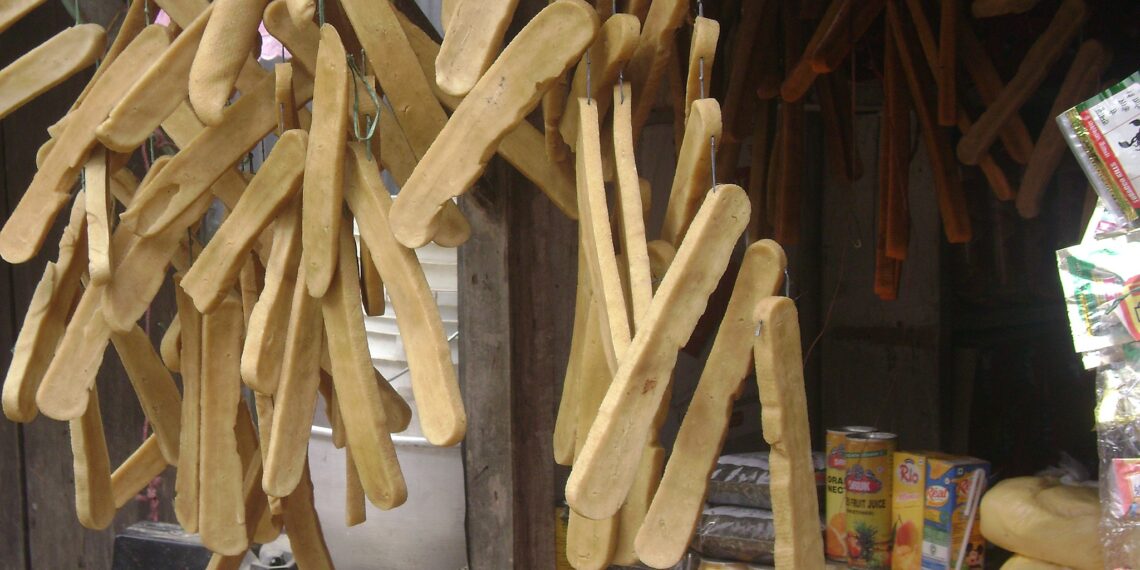Once a humble, high-altitude staple for Himalayan herders, Chhurpi has now become a rising export star as the markets in the United States and Japan are increasing in demand. And the business is transforming rural life and establishing global standards of food safety and quality.
A hard, smoke-dried cheese, Chhurpi is made with yak, cattle, or buffalo milk. In recent times, this unique cheese is becoming popular as a Himalayan Dog Chew. Interestingly, its export to the U.S. is not for wine-tasting parties but for dogs.
From Mountains to Modern Markets
The journey of Chhurpi from yak herders in Dolpo to urban pet stores is astonishing because it originated out of necessity. Living in remote regions like Dolpo and Langtang, herders preserved seasonal milk by boiling whey solids and drying the cheese over smoke, producing a durable, protein‑dense food that could last for months. This texture, once essential for survival, now draws pet owners in Chicago, Tokyo, and Manhattan seeking long‑lasting, natural chew treats.
Besides, as statistics point out, it has become one of the fastest‑growing cottage and agro‑food products. In fiscal year 2023–24, the export was 1,646 tonnes of dog chews. valued at NPR 3.18 billion (about US $27 million), largely to North America. Domestic demand during the COVID‑19 lockdowns, as pet ownership rose, helped fuel this surge.
During the fiscal year 24/25, throughout the first 11 months, exports reached 2,265 tonnes, earning NPR 3.99 billion – $28.91 million, nearly rivalling tea exports. This indicates that 90 per cent of production is sold overseas and that volume has increased by about 34 per cent annually.
The United States remains the primary importer, accounting for 1,888 tonnes ($25.29 million) in the current fiscal year. Canada follows with 138 tonnes ($2.23 million), and smaller quantities go to the UK, Japan, and countries such as South Korea, Malaysia, Taiwan, Singapore, New Zealand, and Ukraine. Export horizons are broadening rapidly beyond North America.
Economic Benefits on Rural Communities
This emerging trade offers far‑reaching benefits to Himalayan communities. Since the early 2000s, businesses such as Himalayan Pet Supply, founded in the US by Nepalis, have created consistent demand and income for mountain farmers.
Today, roughly 12,000 farmers and numerous dairy cooperative collectives, especially in regions like Ilam, Syangja, Panchthar, and Ramechhap, are part of this supply chain.
In Syangja’s Waling Municipality, for instance, the Akala Namuna Small Farmers Agricultural Cooperative gathers 800–1,100 litres of milk every day to make chhurpi, which is then sold for NPR 1,000–1,100 ($7.25–$7.97) per kilogramme. These initiatives have been aided by subsidies like the prime minister’s agricultural digitisation and buffalo subsidy programmes. Cooperative members enjoy improved infrastructure and support, including smallholder animal insurance.
In Baglung, union‑based dairy cooperatives aggregate production from over 1,500 farmers. Their export portfolio was valued at NPR 78.3 million ($567,391) in milk, with chhurpi accounting for the highest international demand.
Standardisation Process
Rapid international growth has prompted the food safety authorities to act. In July 2024, the Department of Food Technology and Quality Control proposed mandatory sanitary and phytosanitary (SPS) standards for chhurpi exports. The draft was submitted to the Ministry of Agriculture and WTO for notification and subsequent inclusion in the Nepal Gazette.
The proposed standards include stringent requirements to ensure chhurpi’s quality and safety. The cheese must have less than 14 per cent moisture, and depending on its fat content, it should either contain at least 60 per cent protein on a dry weight basis for high-fat chhurpi or less than 5 per cent milk fat for low-fat versions.
Furthermore, chhurpi must be free from contaminants such as fungus, pests, and foreign materials like sand or metal. Failure to comply can result in penalties under the Food Act of up to NPR 50,000 ($362) or five years of imprisonment.
Strategic Challenges
While the momentum is clear, exporters face growing threats. Milk prices are NPR 10–12 ($0.07–$0.09) per litre higher than in India—resulting in higher production costs. Hence, chhurpi is NPR 200–300 ($1.45–$2.17) more expensive per kilogram here. In response, competitors in Asia have entered the dog chew market, potentially capturing profits that Nepal previously earned.
Similarly, over-reliance on the U.S. market poses geopolitical risks. Exporters warn that unless the country diversifies into Europe, Southeast Asia, and the Middle East, a shift in consumer trends could collapse its narrative‑driven market position.
The charm of Chhurpi lies in its origin story, which sets it apart from mass‑produced items. However, its premium value might vanish if its meaning changes from an “organic Himalayan tradition” to a commercialised imitation.
Looking Ahead
The Control Department is collaborating with the Ministry of Agriculture and Livestock Development to ensure chhurpi is free from fungus, pests, or sand.
To safeguard product quality and guarantee market access, the government should complete the WTO-aligned SPS standard, which will increase exports worldwide. Exporters should also diversify beyond the US to reduce reliance on a single market. Likewise, stakeholders need to address inflated milk prices to prevent multinational brands from capturing the market and protecting only their share value.
More than a quirky export anecdote, the lore of Chhurpi is a testament to how traditional foods can become global commodities when rooted in a strong narrative, sustained by local stewardship, and supported by evolving standards.
By mid-2025, Chhurpi is close to matching the value of Nepal’s tea exports and is becoming one of the country’s top agro-exports. But its success depends not just on sales but on preserving its meaning, quality, and the benefits it brings to rural communities.
If managed well, Chhurpi could offer the nation more than just another export. It could become a model of ethical global integration: slow, resilient, and authentic.
Pratikshya Bhatta is a junior editor with Nepal Connect.





